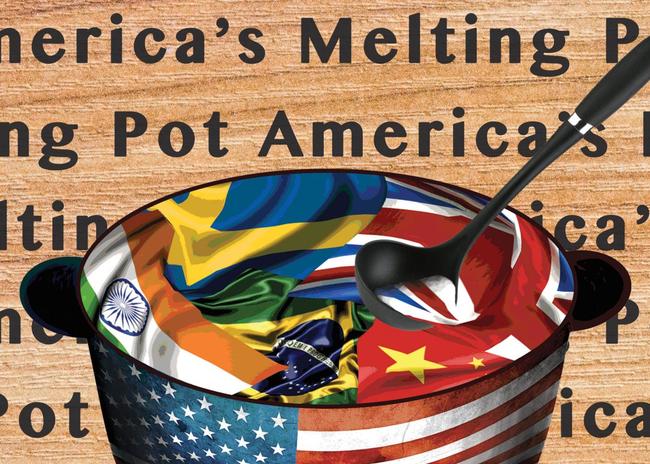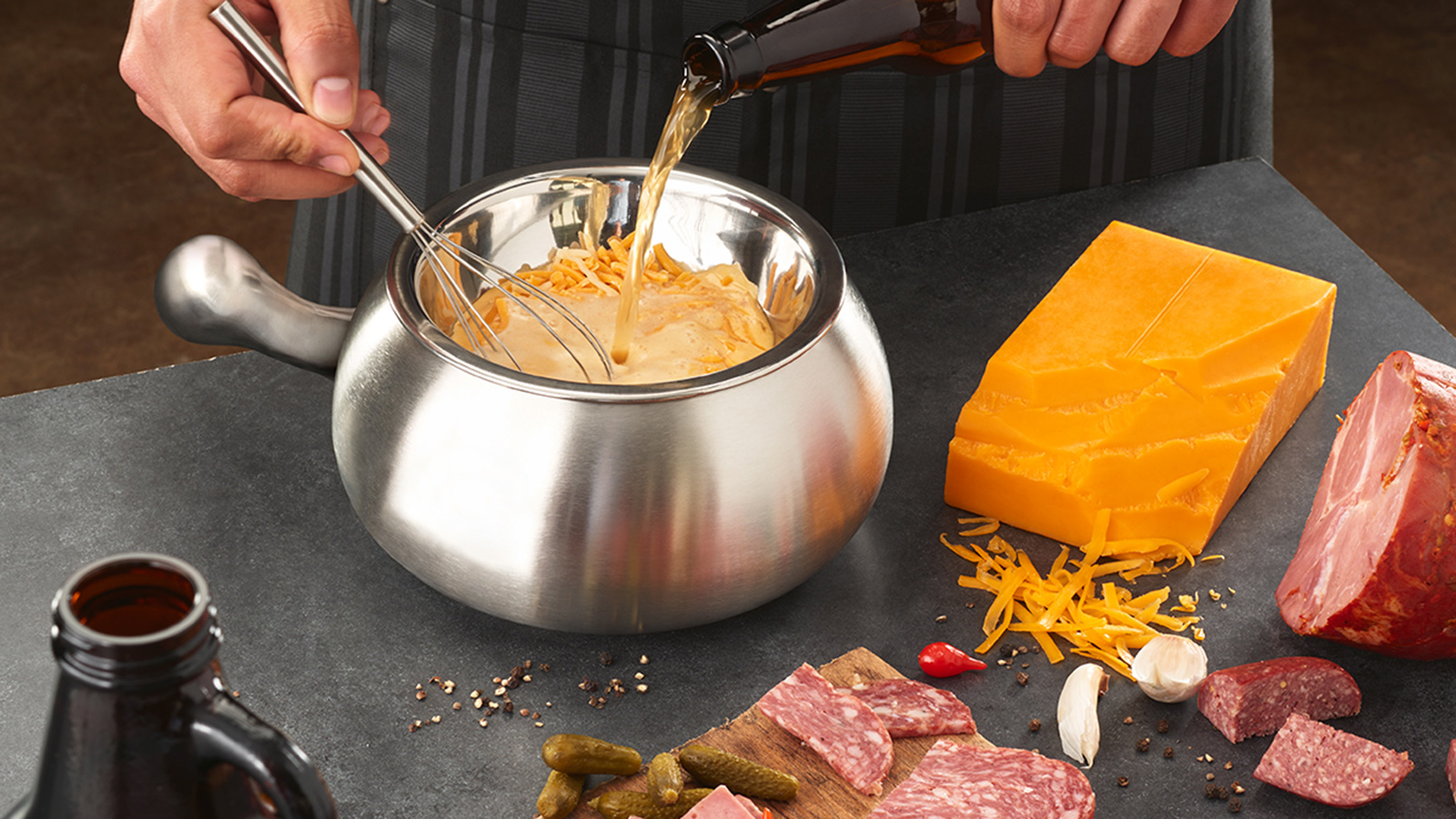The Melting Pot- Ideas And Tools For Your Next Endeavor
Sometimes, you know, a simple idea can hold so much meaning, like the phrase "melting pot." It's a term that brings to mind a place where different elements come together, blend, and perhaps, in a way, create something new. For instance, the project "voices of meltingpot" actually goes across different times and places, bringing various perspectives into one shared space. It's about combining thoughts and experiences, sort of like how various ingredients might combine to make a new dish, which is a pretty cool concept, in fact.
This idea of things coming together isn't just about abstract concepts or different cultures; it also shows up in more practical settings. Think about, say, a big gathering where lots of people share ideas. The "Meltingpot forum," for example, is a part of a very large multi-genre music festival in the Czech Republic, "Colours of Ostrava." Every year, nearly fifty thousand people come to this festival, and the forum gives them a spot to exchange thoughts and views, which is really something special, you know.
Then, there's another kind of "melting pot" that's quite different but just as important for some folks: the actual physical tool used to melt materials. This kind of pot helps people create things, like casting items from lead or other metals. It's a tool that helps bring raw materials into a form where they can be shaped and used, which, in some respects, is another way things come together to make something new, isn't it?
Table of Contents
- The Idea of a "Melting Pot" for Minds
- What Exactly Is This "Melting Pot" Forum?
- Getting Started with a Melting Pot for Projects
- What Are Common Thoughts on Melting Pot Choices?
- Keeping Your Melting Pot in Good Shape
- Troubleshooting Your Melting Pot
- Considering a New Melting Pot- What to Look For?
- Final Thoughts on the Melting Pot
The Idea of a "Melting Pot" for Minds
The name "meltingpot" itself, when it comes to projects like "voices of meltingpot," seems to point to a place where different ways of seeing things can mix. This particular effort, you know, tries to go past the usual limits of time and place. It's about bringing together diverse opinions and life experiences, allowing them to sort of blend and form a more complete picture. This project aims to open up people's minds and hearts, which is a pretty big goal, actually.
It does this by offering a lot of different ways for people to share and take in information. Through conversations, interviews, talks, or even hands-on sessions, the project presents a really wide set of viewpoints. It's a way to get people to think about things from many angles, helping them to see the world with a bit more breadth. This gathering of different thoughts, in a way, mirrors how a physical melting pot combines materials, but here, it's ideas that are being brought together, isn't that interesting?
This kind of "melting pot" of ideas is really about making connections. It's about showing that even if people come from different backgrounds or have different thoughts, there's still a lot to gain from listening to one another. The goal is to encourage a broader view of things, making it easier for folks to understand and appreciate what others bring to the table. So, it's more than just a name; it's a description of how minds can come together, which is a rather powerful concept.
What Exactly Is This "Melting Pot" Forum?
So, you might be wondering about the "Meltingpot forum" specifically. Well, it's actually a part of a very large music festival in the Czech Republic, called "Colours of Ostrava." This festival, by the way, sees up to fifty thousand visitors each year, which is a lot of people coming together for music and more. The forum provides a space within this big event for deeper conversations and sharing of ideas, sort of like a central spot for thoughts to mix.
This forum is not about making money; it's a non-profit effort. Its main aim is to help open the minds and hearts of a lot of people. It does this by offering a broad range of perspectives through different kinds of activities. You might find debates happening, or perhaps some interviews, maybe even presentations or workshops. These activities are all about giving people a chance to hear different sides of things and to think about them in new ways, you know.
If you have any questions about the "Meltingpot forum" itself, there are answers to common inquiries right there on their site. And if you don't find what you're looking for, you can just send them a message through email or reach out on their social media pages. They're happy to help you with your questions, which is really good to know, isn't it?
Getting Started with a Melting Pot for Projects
Moving from ideas to something you can actually hold, let's talk about the physical "melting pot" that some people use for their projects, like making things from metal. When someone first thinks about getting one of these tools, they often consider a few popular options. For instance, a lot of folks, like me, might just go with a "Lee setup" for their melting pot, mainly because a good deal of their other tools, like presses, are already from Lee or maybe Hornady. It just makes sense to stick with what you know, in a way, or what fits with what you already have, right?
But, you know, even with popular brands, there are always things to think about. When someone is just starting out, they might be looking at what others are using or what seems like a good fit for their needs. It's a process of trying to figure out the best way to get things done. Some people, for example, might be thinking about getting a "Lyman #61 melting pot" to use instead of just dipping metal from a larger container. It's about finding the right tool for the job, so to speak, and what feels comfortable to use.
The choice of a "melting pot" can actually change how someone approaches their whole project. Early on, someone might cast items because they simply need them, out of necessity, you know. They might not enjoy the casting part as much as, say, reloading, but it's a necessary step. Then, later on, if they can afford it, they might get a better pot or a different setup that makes the process a bit more enjoyable. It just goes to show that your tools can really shape your experience, in some respects.
What Are Common Thoughts on Melting Pot Choices?
When people talk about these "melting pots," you often hear different opinions, and some of them aren't always positive. For example, I've heard quite a bit of less-than-great things about certain "melting pots" from some brands. It makes you wonder what the common issues might be, or why some people have trouble with them. This kind of talk can make someone a bit hesitant when they're trying to pick out their own equipment, you know?
One person, for instance, mentioned that for them, buying a "bottom pour pot" was a really big mistake. They found it didn't work out as well as they hoped. Now, they only use a small two-ounce kitchen ladle that has a tiny hole, about three thirty-seconds of an inch, at the bottom. This shows that what works for one person might not work for another, and sometimes, a simpler, less expensive tool can actually be the better fit for a specific way of working, which is pretty interesting.
On the other hand, someone else might have a completely different experience. You hear about someone who, you know, bought a "good melting pot," and it worked out well for them. This just goes to show that there's no single "best" option for everyone. It really depends on what you're doing, how you like to work, and what feels right in your hands. It's about finding that personal connection with your tools, in a way, that makes the whole process smoother and more enjoyable, right?
Keeping Your Melting Pot in Good Shape
So, once you have your "melting pot," a question that often comes up, and it might seem a bit silly at first, is "how do you clean your melting pot after use?" This is actually a really important thing to think about if you want your equipment to last and work well. Keeping it tidy means it's ready for the next time you need it, and it can help prevent issues down the line, you know.
Different people have different ways of doing this. Some might just scrape out any leftover material once it cools, while others might have a more involved process. The goal is always to make sure that the pot is clear and ready for its next job, so that the material you're melting can flow freely and heat up evenly. It's a bit like taking care of any tool; a little attention after each use can make a big difference in its lifespan and how it performs, which is a pretty practical point, in fact.
Proper care of your "melting pot" also helps keep things safe. When you're working with melted materials, you want everything to be as predictable as possible. A clean pot helps with that, reducing the chances of any bits getting stuck or causing problems with the heating. It's a small step that pays off in the long run, ensuring that your projects go smoothly and that your equipment stays in good working order for a good while, actually.
Troubleshooting Your Melting Pot
Sometimes, even with good care, a "melting pot" can act up. It's just how things go with tools, isn't it? For example, I was really happy to share that my old pot, you know, the one I'd had for a while, was back up and melting just fine. It turned out to be nothing more than a simple issue: a wire between the temperature control part and the heating element had just burnt out. It was a pretty straightforward fix, thankfully.
This kind of thing happens more often than you might think with any electrical device, even a "melting pot." It's a good reminder that not every problem means you need a brand new piece of equipment. Sometimes, a quick check of the connections or a look for obvious signs of wear can point to a simple solution. It's like when your car makes a funny noise; it might just be a loose part, not a major breakdown, in a way.
Knowing a little bit about how your "melting pot" works can really help when something seems off. Checking the power cord, looking at the heating element, or even just making sure everything is plugged in correctly can save you a lot of worry and perhaps some money too. It's about being a bit of a detective, really, and trying to figure out the small things that might be causing a big problem, which is a useful skill to have, you know.
Considering a New Melting Pot- What to Look For?
When it comes time to think about getting a new "melting pot," or maybe a different kind, there are some important questions people often ask. For instance, a common one is, "Which bottom pour melting pot is best, and why?" This really gets to the heart of what makes one pot better than another for certain tasks. It's about the features, how well it holds temperature, and how easy it is to use, among other things, isn't it?
Another related question that comes up is, "Which bottom pour lead melting furnace would you buy?" This takes it a step further, focusing on a specific type of pot that lets you pour from the bottom. People want to know what others have found useful and dependable. It's about getting advice from those who have been there, done that, and can share their experiences, which is pretty valuable, you know.
Some folks even consider having more than one "melting pot" for different jobs. For example, I'm thinking about getting a "Lyman #61 melting pot" to use for casting, and I'm also thinking about this so I don't melt raw materials in the same pot I'll be using for the final casting process. This idea of separating tasks can help keep things cleaner and perhaps even make the final product better. It's about finding the most efficient and effective way to get your work done, so to speak, and sometimes that means having specialized tools for specialized jobs, right?
Final Thoughts on the Melting Pot
So, we've talked about the idea of a "melting pot" in a few different ways. We looked at the "voices of meltingpot" project, which brings together different thoughts and perspectives from across time and place. This project, which is part of the big "Colours of Ostrava" festival, aims to open minds and hearts through discussions and workshops, you know, offering many viewpoints. We also covered the practical side of "melting pots," the kind used for melting materials for projects.
We considered the choices people make when buying these tools, like the "Lee setup" or a "Lyman #61 melting pot," and how some folks find a "bottom pour pot" to be a mistake, preferring a simple ladle instead. We also touched on how to keep your "melting pot" in good shape, including the "silly question" about cleaning it. Plus, we discussed how simple issues, like a burnt wire, can sometimes be fixed, getting an old pot "up and melting just fine." Finally, we thought about what to look for when choosing a new "melting pot," like the best "bottom pour lead melting furnace," and the idea of having separate pots for different tasks. It's clear that whether it's about ideas or tools, the concept of a "melting pot" involves bringing different things together, which is pretty much what we covered, in a way.

The American "Melting Pot" Can Turn Into A Volatile Mixture At The Top

The Melting Pot in Sacramento, CA

Is America Truly A 'Melting Pot?'